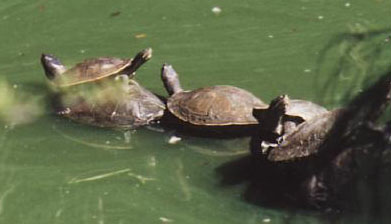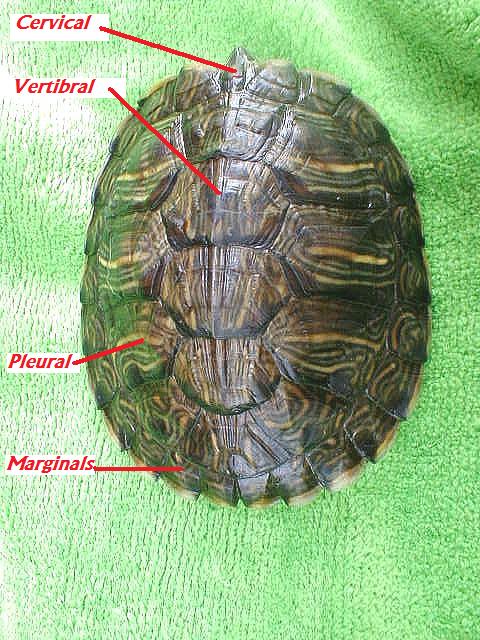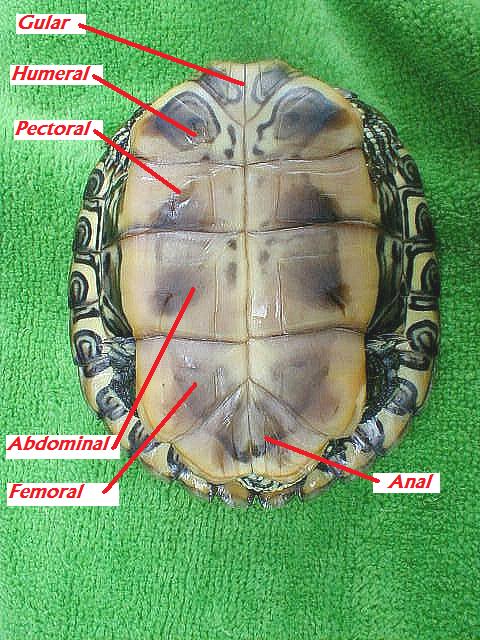
Can Turtles Bite?
Yes, they can give a nasty bite, for those who wish to feed them by hand can do so with tongs, i personally feed by hand without tongs where possible to tame them, with a little care and craftiness this can be done but expect to get bitten once in a while as their aim for the food may not be as good as you expect sometimes !!!
Turtle Behaviour
Turtles on the whole are not aggressive to people, whilst they may seem friendly whilst when your fingers are in the water some may run away whilst others may see it as food and bite !
All turtles have their own character and behaviour/ personalities, and will make great pets if treated and cared for properly.
Just like humans they can have their good/bad days too, when handled and taken out of the water they can become aggressive so be careful.
Turtles and Salmonella
Turtles are known to carry salmonella, this can be passed to humans, but like any other bacteria can be prevented by washing hands before and after handling turtles and their enclosure with a hand gel as used in hospitals (the non-perfumed type).
It is recomended that young children are supervised and their hands washed as they tend to put fingers in mouths!!
Turtles and their Growth
Turtles will carry on growing to their full size so don't expect a small enclosure to inhibit a turtles growth, they will soon outgrow it very quickly, most turtles will grow 4"-5" within the first 12-18 months if cared for correctly.
Water Depths
For juveniles i recommend around 4"-5", Adults like it deep, but this can vary in certain species.
Male or Female
A turtles tail has an opening called the Cloaca, through this the turtle performs urinary, fecal and reproductive tasks.
The sex is distinguished by the position of the opening on the tail;
Males have a longer, thicker tail with the opening nearer to the tip of the tail.
Females have a smaller and thinner tail with the opening closer to the base of the tail.
In certain species (red eared sliders ,cooters, maps) the male has long front claws which are used to 'tickle' the females face during foreplay.
With juveniles it's virtually impossible to tell the sex until older.
Turtle Anatomy explained
All turtles have a top shell called the Carapace, and a bottom shell called the Plastron.
The part joining these two together at either side is called the bridge.
The sections on top of the shell are called scutes (Soft shelled turtles don't have these as their shells are soft),
A turtles shell can feel things coming into contact but cannot feel pain (the nerve endings are different).
Below you can see the Carapace on the left and the plastron on the right with the names of the different parts of the shells.
 |  |

 |
When measuring a turtles length measure from front of carapace to the rear as shown in diagram on left. |
A typical male red eared slider, note the long front claws. >>>>>
|

Turtle Tips
If a turtle receives bites or cuts leading to infection, isolate the turtle into another tank and dissolve one teaspoon of AQUARIUM SALT into some water from the tank and then add to tank, this will clear up any infections and help healing.
When feeding you can put the turtle/s into a container with some water from tank and feed them, this will drastically reduce the amount of muck in the tank thus resulting in less frequent water/filter changes.
Use aquarium water conditioner as per instructions, this will eliminate any chloride in the water making it safe for turtles to live in.
When starting up a fresh setup either from new or after emptying/cleaning always use cycle additive, i use a product called "cycle", as always, follow instructions.
"cycle" is neccesary to start up the biological cycle required within the aquarium .
Wash hands before and after any interaction with turtles or their habitat, this is to stop any spread of infections not just from the turtle but from you as well !!!
Protect your submersible heater from turtles with a heater guard, turtles are very strong and can break the glass heater.
When purchasing a tank always get a bigger one as the turtles will soon outgrow a small tank.
UV-B Lighting is reccomended for all turtles to aid grow and the production of calcium within the body (uv-b replicates the suns natural rays essential for turtles).
If you don't have uv-b lighting then a food supplement called Vitamin D3 must be introduced into the turtles diet.
Do not put your turtles glass tank in the sunlight as the heat from the sun will be magnified through the glass thus resulting in extreme temperatures within the tank. this also applies to acrylic (plastic) tanks.
